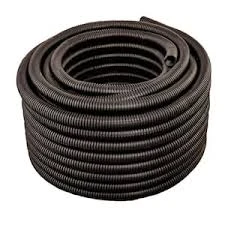Understanding the Applications and Benefits of Drag Chains in Industrial Settings
Understanding the Importance of Drag Chains in Industrial Applications
Drag chains, also known as cable carriers or energy chains, are essential components in various industrial settings, playing a critical role in the management of cables, hoses, and other vital resources. With continuous advancements in technology and automation, the significance of drag chains has rapidly increased, demonstrating their utility across multiple sectors, including manufacturing, robotics, and telecommunications.
What is a Drag Chain?
A drag chain is a mechanical device designed to guide and protect moving cables and hoses in environments where motion is prevalent. These chains consist of a series of interconnected links that create a flexible tube or channel through which cables can move safely. Their design allows for both lateral and vertical movement, making them ideal for machines that have complex motion paths, such as robotic arms or gantry systems.
The Functionality of Drag Chains
The primary function of a drag chain is to organize and safeguard cables and hoses from wear and tear due to repetitive movement. In industrial settings, cables can be subject to bending, twisting, and dragging over surfaces, which can lead to premature failure. Drag chains help mitigate these risks by providing a controlled pathway that minimizes stress on the cables.
Moreover, drag chains can facilitate the smooth movement of various media, including power supply, data transmission lines, hydraulic hoses, and pneumatic tubes. This organization not only enhances the lifespan of the cables but also improves the overall efficiency of machinery by ensuring that the resources can move freely without tangling or snagging.
Applications in Various Industries
Drag chains find applications in numerous industries. In manufacturing, they are often used on assembly lines and automated machinery to manage cables effectively, enhancing productivity by reducing downtime associated with cable maintenance or replacement. In the robotics industry, drag chains help ensure that robotic joints and actuators can operate seamlessly, allowing for precise movements without the risk of cable damage.
drag chain use

The aerospace industry also benefits from drag chains. Aircraft manufacturing requires high levels of precision and safety, and drag chains are vital for managing cables within moving parts, such as wings and landing gear. By protecting sensitive wiring from potential harm, drag chains contribute to the overall safety and reliability of aircraft.
Additional applications are found in the entertainment industry, where drag chains help manage cables in stage equipment and lighting systems. Here, they enable smooth movements while keeping the setup organized and safe for performers and crew alike.
Advantages of Using Drag Chains
The advantages of incorporating drag chains into industrial operations are numerous. First and foremost, they protect cables from physical damage, significantly extending their lifespan. This durability translates into cost savings for businesses, as the need for frequent cable replacements is reduced.
Furthermore, drag chains enhance safety in the workplace. By keeping cables secure and out of harm's way, they help prevent accidents related to tripping or equipment malfunction due to damaged cords. Additionally, the use of drag chains can lead to decreased maintenance needs, allowing companies to focus their resources on more critical operational facets.
Lastly, the installation of drag chains can promote a tidy work environment. By neatly organizing cables and hoses, businesses can maintain better hygiene and order in their facilities, which can contribute to improved employee morale and productivity.
Conclusion
Drag chains play an indispensable role in modern industrial applications, ensuring the safe and efficient management of cables and hoses in moving operations. Their ability to protect vital resources, coupled with the benefits of increased safety and reduced maintenance costs, makes them an essential component in various industries. As technology continues to evolve, the design and application of drag chains will only become more sophisticated, further solidifying their importance in industrial operations worldwide.








